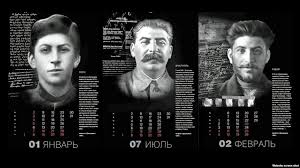Vatican City, Jan 12, 2014 / 05:57 am (CNA).-Today Pope Francis announced the names of the 19 men from various parts of the globe who will be appointed cardinals in February.
Note: More info on the top 3 elected Cardinals is provided below. After reviewing his selections, we shall have a better idea of the direction Bergoglio wishes to guide the Catholic Church.
Vatican City, Jan 12, 2014 / 05:57 am (
CNA).- Today Pope Francis announced the names of the 19 men from various parts of the globe who will be appointed cardinals in February.
In the surprise announcement at the end of his Sunday Angelus, Pope Francis noted that the new Cardinals come “from 12 countries from every part of the world,” and “represent the deep ecclesial relationship between the Church of Rome and the other Churches throughout the world.”
The geographical distribution entails eight cardinals from Europe; seven from the Americas; and two from both Africa and Asia. No cardinals from the United States were named.
Besides some expected names, such as Archbishops Pietro Parolin, Secretary of State; Lorenzo Baldisseri, general secretary of the Synod of Bishops, Gerhard Mueller, prefect of the Congregation for the Doctrine of the Faith; and Beniamino Stella, prefect of the Congregation for Clergy, the list includes several men from the far reaches of the globe.
Archbishop of Ouagadougou, Philippe Nakellentuba Ouedraogo, will join the College of Cardinals from Burkina Faso in west Africa, as will Bishop Chibly Langlois of Les Cayes, Haiti: both will be the only Cardinals from their countries.
Fr. Federico Lombardi of the Holy See’s Press Office noted that the Pope’s choice of these two men especially “shows concern for people struck by poverty.”
Pope Francis celebrates Mass for the Feast of the Epiphany in St. Peter’s Basilica on Jan. 6, 2014. Credit: Kyle Burkhart / CNA.
Three new Cardinals from Pope Francis’ own South America are on the list, including the current Archbishop of Buenos Aires, Mario Aurelio Poli, who replaced the then- Jorge Cardinal Bergoglio when he was elected Pope last spring.
New Cardinals
Pope Francis today in Rome at his noon Angelus announced the names of 19 new cardinals, 16 “electing” cardinals under the age of 80, and three “honorary” cardinals above the age of 80, and so not eligible to vote in a Conclave.
The ceremony to create these news cardinals will be in Rome on February 22, Feast of the Chair of St. Peter. It will be the first Consistory to create cardinals of Pope Francis.
Are there surprises? Yes, a number — except that most of these “surprises” have been rumored for many weeks, so we cannot really consider them “surprises” at all. But the choices are different than ones that might have been made by another Pope.
Pope Francis in general has chosen “lesser-known” men (for example, a lesser known prelate from the Philippines, Orlando B. Quevedo, O.M.I., Archbishop of Cotabato) and overlooked several prelates who might normally have been “expected” to have been named cardinals, especially Archbishop Francesco Moraglia, Patriarch of Venice, originally from Genoa (he was ordained a priest by Cardinal Giuseppe Siri of Genoa).
That is, Francis, by his choices, continues to give a powerful signal that he wants the Church to think less about herself — in his signature phrase, to not be “auto-referential” — and instead to think more about the poor and suffering in our world, to go increasingly “out of the sacristy” and into the “peripheries” to encounter those who are often forgotten and without hope.
So, under Francis, we are in a period when old schemes of ecclesial power and authority, and promotion, are being set aside in favor of a new emphasis on pastoral care in support of the marginalized and the suffering.
There are no Americans on the list (some had expected one or two American archbishops might be chosen). There is one from Great Britain: Archbishop Vincent Nichols of Westminster.
The personal secretary of Pope John XXIII, Loris Capovilla, who is now 98, was chosen. He was present in 1959 when Pope John, at Catsel Gandolfo, asked for the Third Secrect of Fatima to be brought to him to read.
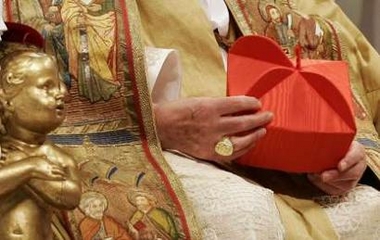
Here are the names:
1. Pietro Parolin, Titular Archbishop of Acquapendente, Secretary of State.
2. Lorenzo Baldisseri, Titular Archbishop of Diocleziana, Secretary General of the Synod of Bishops.
3. Gerhard Ludwig Mueller, Archbishop-Bishop emeritus of Regensburg, Prefect of the Congregation for the Doctrine of the Faith.
4. Beniamino Stella, Titular Archbishop of Midila, Prefect of the Congregation for the Clergy.
5. Vincent Nichols, Archbishop of Westminster, United Kingdom.
6. Leopoldo Jose Brenes Solorzano, Archbishop of Managua, Nicaragua.
7. Gerald Cyprien Lacroix, Archbishop of Quebec, Canada.
8. Jean-Pierre Kutwa, Archbishop of Abidjan, Ivory Coast.
9. Orani Joao Tempesta, O.Cist., Archbishop of Rio de Janeiro.
10. Gualtiero Bassetti, Archbishop of Perugia-Citta della Pieve, Italy.
11. Mario Aurelio Poli, Archbishop of Buenos Aires, Argentina.
12. Andrew Yeom Soo jung, Archbishop of Seoul, South Korea.
13. Ricardo Ezzati Andrello, S.D.B., Archbishop of Santiago del Cile, Chile.
14. Philippe Nakellentuba Ouedraogo, Archbishop of Ouagadougou, Burkina Faso.
15. Orlando B. Quevedo, O.M.I., Archbishop of Cotabato, Philippines.
16. Chibly Langlois, Bishop of Les Cayes, Haiti.
The three over the age of 80:
17. Loris Francesco Capovilla, Titular Archbishop of Mesembria.
18. Fernando Sebastian Aguilar, C.M.F., Archbishop emeritus of Pamplona.
19. Kelvin Edward Felix, Archbishop emeritus of Castries.
Perhaps the two most noticeable omissions are two Italians: Francesco Moraglia, Patriarch of Venice (recall that Pope John XXIII and Pope John Paul I were both Patriarchs of Venice before being elected Popes in 1958 and 1978, so Venice has been a very prominent see in the Church) and Cesare Nosiglia, Archbishop of Turin.
Two other important names not on the list: (1) The Vatican Librarian, the French Dominican scholar Jean-Louis Bruguès. When he was secretary of the
Vatican’s Congregation for Catholic Education, had opposed then-Cardinal Bergoglio’s choice to be Rector of The Catholic University of Buenos Aires, Father Victor Manuel Fernández, who is said to be very close to Pope Francis and one of his “ghost-writers” for papal documents; and (2) the Archbishop of Malines-Bruxelles, Belgium, André Léonard, considered a “conservative” and one of the “rising stars” in the Church in Western Europe.
Here is a brief commentary on the first three choices of Pope Francis:

1. The first name on the list is that of the new Vatican Secretary of State,
an Italian, Archbishop Pietro Parolin. This was a “necessary” choice, as Parolin, as Secretary of State, would (barring a complete revolution) have to be a cardinal.
But this simply reinforces the idea the Francis respects and trusts Parolin — that is, that he knew already when he named him Secretary of State at the end of the summer that he would, in consequence of that, make him a cardinal.
Parolin has spent his life in the service of the Holy See, first in Nigeria, then in Mexico, then in the Vatican Curia, and most recently in Venezuela as the Pope’s nuncio (ambassador) there, under the difficult circumstances of the presidency of Hugo Chávez (who died on March 5, almost one year ago).
So Parolin, who is fluent in Spanish, is very well-informed about the situation in Latin America today.
Parolin has also, over the years, followed closely events in Vietnam, and in China. He is well-informed on Asia.
Moreover, he was for a number of years the Vatican’s lead negotiator at nuclear arms reduction talks in Vienna. So he understands well the situation of global armaments and their control. He has been at the forefront of Vatican efforts to approve and implement the Nuclear Nonproliferation Treaty. Addressing the International Atomic Energy Agency on September 18, 2006, at its headquarters in Vienna, Austria, Parolin referred to this treaty as “the basis to pursue nuclear disarmament and an important element for further development of nuclear energy applications for peaceful purposes.” He said: “Since this treaty is the only multilateral legal instrument currently available, intended to bring about a nuclear weapons-free world, it must not be allowed to be weakened. Humanity deserves no less than the full cooperation of all states in this important matter.”
Parolin is a courteous, friendly man, very well-trained, profoundly dedicated to his work (he often works into the evening, 12-hour days), and he is exceptionally calm and balanced: key attributes for the delicate work of diplomacy, which seeks to find a way to resolve problems and disputes between contending, and sometimes unreasonable, parties.
Parolin is now the key “filter” between Pope Francis and the world’s diplomatic and political communities, where the worldly interests of nations and interest groups contend and clash.
He has said was taken by surprise when Pope Francis named him his Secretary of State, but Pope Francis clearly trusts him and will be relying greatly on him in the months ahead.

2. The second name is that of the new head of the Synod of Bishops, also an Italian,
Lorenzo Baldisseri. Pope Francis, moments after his election on March 13, famously removed his own cardinal’s cap and placed it on the head of then-Archbishop Baldisseri, who was acting as the Secretary of the Conclave. Vatican watchers immediately interpreted that as a sign that Baldiserri would be made a cardinal in the Pope’s first Consistory, and that has turned out to be a true forecast.
Born in Pisa, Italy, Baldisseri served in the Vatican’s diplomatic service in Guatemala, Haiti, Paraguay, India and — for 10 years — in Brazil.
So Baldiserri, who speaks Spanish and Portuguese fluently (and also English), has decades of personal experience in Latin America.
For the past two years, he has been the Secretary of the Congregation of Bishops, the body which studies the choices of bishops from around the world for the Latin-rite Church, so he knows well the process to choose bishops, and the more recent choices as bishops.
He is also an accomplished pianist, and has played in concerts in and out of the Vatican.

3. The third name, Gerhard Mueller, is another “necessary” choice. Pope Benedict named Mueller head of the Vatican’s chief doctrinal office, the Congregation for the Doctrine of the Faith.
Mueller, who is a very tall, powerfully-built man, was trusted by Benedict in part because he has been handling the editing of Benedict’s collected works (Opera Omnia).
Mueller has been a close personal friend of Father Gustavo Gutierrez of Lima, Peru, considered to be the “father” of Liberation Theology. Mueller met Guttierrez in 1988 and has often visited him, spending weeks in Lima in study programs. “The Latin American ecclesial and theological movement known as ‘Liberation Theology,’ which spread to other parts of the world after the Second Vatican Council, should in my opinion be included among the most important currents in 20th century Catholic theology,” Mueller has said.
Mueller is also known for having said that the Church’s position on admitting to divorced and remarried Catholics to the sacrament of Communion is not something that can or will be changed. But other German Church leaders, including Cardinal Walter Kasper, have recently gone on record saying the teaching may and will be changed. So this is one important area of discussion and potential tension in coming months, leading up to the Synod on the Family in October.

The Patriarch Not Chosen
(Photo: Francesco Moraglia of Venice; he was not made a cardinal)
There are only three Patriarchates in the Latin Church: Lisbon in Portugal, Jerusalem in the Holy Land, and Venice in Italy.
The Emeritus Patriarch of Lisbon, José da Cruz Policarpo, is a cardinal. (The current Patriarch of Lisbon is Don Manuel José Macário do Nascimento Clemente, officially referred to as Manuel III; he was appointed by Pope Francis in May 18, 2013, replacing Policarpo who was resigned due to old age, and solemnly installed on July 6, 2013 at the Patriarchal Cathedral of St. Mary Major.)
Patriarch Faoud Twal of Jerusalem is not a cardinal.
And, for the moment, the Patriarch of Venice, Moraglia, will not be a cardinal.
Venice is referred to as the “See of St. Mark” because the relics of St. Mark were brought to Venice from Alexandria in the early 800s. (The story of St. Mark is interesting and worth recalling also because it reveals how early the Gospel of Mark probably is. We know that St. Peter went to Antioch about seven or eight years after the death of Christ, in c. 40-41 A.D., and from there traveled through Asia Minor (as mentioned in 1 Pet 1:1), arriving in Rome in the second year of Emperor Claudius (42 A.D.) as Eusebius tells us in hisEcclesiastical History (2.14.6). Somewhere on the way, Peter picked up Mark and took him as travel companion and interpreter. Mark is believed to have written down the sermons of Peter (much like a reporter), the raw material for the Gospel According to St. Mark (Eccl. Hist. 15–16), before he left Peter and went to Alexandria in the third year of Claudius (43 A.D.). If this reconstruction is accurate, the words of the Gospel of Mark were written down within 10 years of the death of Jesus. In any case, relics believed to be the body of St. Mark were stolen from Alexandria in 828 A.D. by Venetian merchants and taken to Venice. A mosaic of the event in St Mark’s Basilica depicts sailors covering the relics with a layer of pork and cabbage leaves. Since Muslims are not permitted to touch pork, this was done to prevent Muslim guards from inspecting the ship’s cargo too closely. “History records no more shameless example of body snatching…” as John Julius Norwich put it. And thus the relics of St. Mark came to Venice.)
Moraglia was named Patriarch of Venice two years ago, in January, 20912, by Pope Benedict XVI, succeeding Cardinal Angelo Scola on the throne of St. Mark. He took up his post in March 2012.
Moraglia was born in Genoa on May 25, 1953 and was ordained priest by Cardinal Giuseppe Siri on June 29, 1977. A doctor in dogmatic theology, he worked a director of the office of Culture and at the University of the Diocese of Genoa, as a professor of Christology, anthropology, the sacramentary and history of theology at the Theological Faculty of Northern Italy and as dean and professor at the Higher Institute of Religious Studies of Liguria.
Moraglia was considered a “Ratzingerian,” both from a theological and liturgical point of view. However, on more than one occasion, the bishop took a supportive position on behalf of unemployed factory workers.
From the Journal of Dr. Robert Moynihan
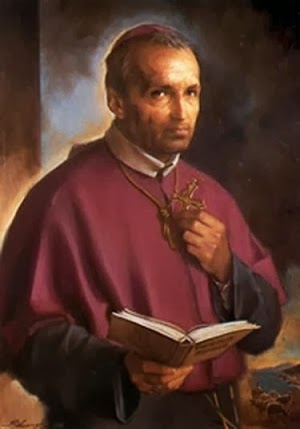

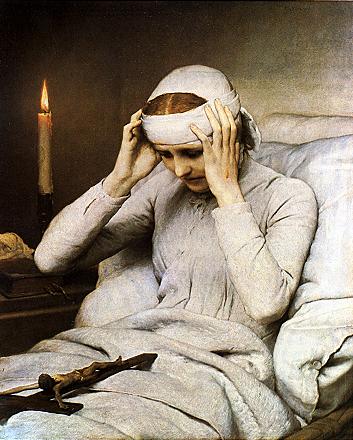

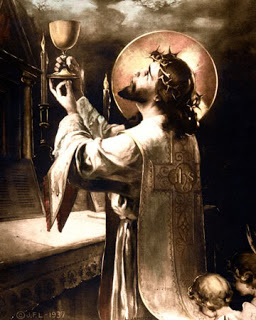


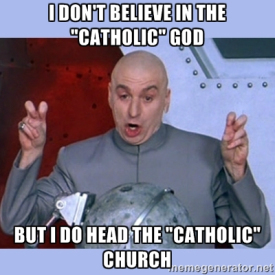


 1. The first name on the list is that of the new Vatican Secretary of State, an Italian, Archbishop Pietro Parolin. This was a “necessary” choice, as Parolin, as Secretary of State, would (barring a complete revolution) have to be a cardinal.
1. The first name on the list is that of the new Vatican Secretary of State, an Italian, Archbishop Pietro Parolin. This was a “necessary” choice, as Parolin, as Secretary of State, would (barring a complete revolution) have to be a cardinal. 2. The second name is that of the new head of the Synod of Bishops, also an Italian, Lorenzo Baldisseri. Pope Francis, moments after his election on March 13, famously removed his own cardinal’s cap and placed it on the head of then-Archbishop Baldisseri, who was acting as the Secretary of the Conclave. Vatican watchers immediately interpreted that as a sign that Baldiserri would be made a cardinal in the Pope’s first Consistory, and that has turned out to be a true forecast.
2. The second name is that of the new head of the Synod of Bishops, also an Italian, Lorenzo Baldisseri. Pope Francis, moments after his election on March 13, famously removed his own cardinal’s cap and placed it on the head of then-Archbishop Baldisseri, who was acting as the Secretary of the Conclave. Vatican watchers immediately interpreted that as a sign that Baldiserri would be made a cardinal in the Pope’s first Consistory, and that has turned out to be a true forecast. 3. The third name, Gerhard Mueller, is another “necessary” choice. Pope Benedict named Mueller head of the Vatican’s chief doctrinal office, the Congregation for the Doctrine of the Faith.
3. The third name, Gerhard Mueller, is another “necessary” choice. Pope Benedict named Mueller head of the Vatican’s chief doctrinal office, the Congregation for the Doctrine of the Faith.
